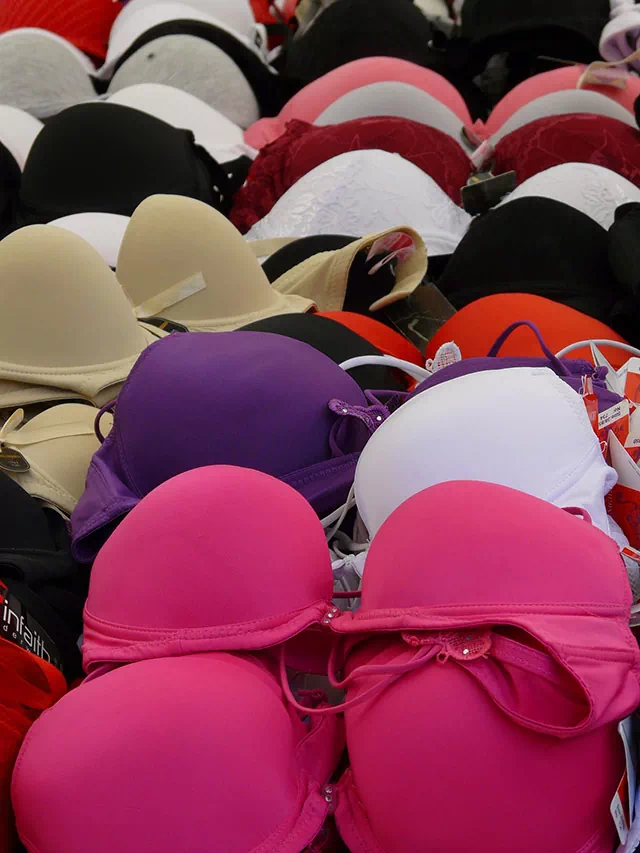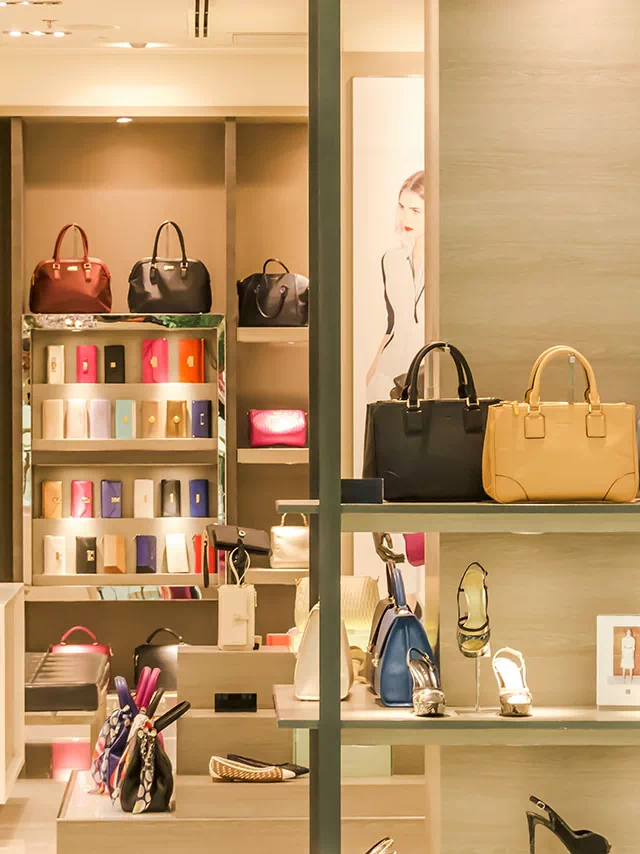Bras are a fundamental piece of clothing for women and play an important role in providing support, comfort, and shaping to the bust. When it comes to choosing the best bra for daily use, there are many factors to consider. From size and fit, to support and comfort, to style and occasion, there are many variables that can affect the overall quality and performance of a bra. It’s important to keep in mind that a well-fitting bra is essential for comfort, support, and overall health. A poorly fitting bra can cause discomfort, irritation, and even long-term damage to the bust and back. That’s why it’s crucial to find a bra that fits well, provides adequate support, and is comfortable enough to wear all day long. When choosing a daily wear bra, it’s important to consider your body type, the shape of your bust, and the level of support you need. Women with larger busts may need a bra with more support and structure, while women with smaller busts may prefer a more relaxed and comfortable fit. The type of clothing you wear and the occasions you attend can also influence your bra choice.
In this article, we’ll explore the different factors to consider when choosing the best bra for daily use, including size and fit, support, comfort, style, occasion, brand, and cost. Whether you’re looking for a bra for everyday wear or a special occasion, with a little research and consideration, you can find the perfect bra to meet your needs.
T-Shirt Bra
T-shirt bras are a staple in many women’s wardrobes because they provide a smooth and seamless look under tight-fitting clothing. They often have molded cups that are seamless and lightly padded, giving a smooth and round appearance to the bust. The cups are also designed to provide shape and coverage without adding bulk. This makes T-shirt bras ideal for wearing with tight-fitting tops, t-shirts, and dresses.
Balconette Bra
Balconette bras are a type of bra that is designed to provide lift and support while still being low-cut. They have a lower neckline than a full-coverage bra, which makes them ideal for wearing with lower cut tops and dresses. The cups of a balconette bra are usually lightly padded, providing a flattering shape and helping to prevent show-through. Balconette bras are also designed to provide good support without being too heavy, making them ideal for daily wear.
Comfort
Comfort is essential when choosing a daily wear bra. Look for bras that have soft and comfortable fabrics, such as cotton or microfiber, that will prevent irritation and chafing. The straps should be adjustable and padded to ensure a good fit and to avoid digging into the skin. Breathable materials, such as mesh, can also help prevent sweat and odors. It’s important to choose a bra that fits well and feels comfortable, as an ill-fitting bra can cause discomfort, restrict breathing, and even lead to pain.
Cup Size
It’s crucial to choose a bra that fits properly and provides adequate support. Bras that are too small in the cup can cause discomfort, restrict breathing, and lead to pain. On the other hand, bras that are too big in the cup can cause sagging and lack of support, leading to discomfort and a less flattering appearance. It’s important to get measured regularly, as changes in weight, hormones, and age can all affect your cup size. Once you know your correct size, you can ensure that you choose bras that fit properly and provide adequate support.
Outfit
Consider the outfit you’ll be wearing with the bra when choosing the right type of bra. For example, if you’ll be wearing a low-cut top, a balconette or plunge bra may be a better choice. If you’ll be wearing a tight-fitting top, a T-shirt bra may be a better option. The type of bra you choose should be appropriate for the neckline and style of the outfit you’ll be wearing, as well as your own comfort and support needs.
Variety
Having a variety of bra styles in your wardrobe is important because different outfits and necklines can call for different types of bras. For example, a T-shirt bra may not be appropriate for wearing with a low-cut dress, while a balconette bra may not provide enough support for a high-impact workout. Having a mix of T-shirt, balconette, sports bras, and other styles will ensure you have the right bra for any occasion.
Support
A good daily wear bra should provide adequate support to keep your breasts in their natural position and prevent sagging. Bras with underwire and cups that fully encase the breasts provide the most support, while sports bras are designed to provide maximum support during physical activity. When choosing a bra for daily wear, it’s important to consider your support needs and choose a style that will provide the right amount of support for your needs.
Style
While comfort and support are the most important factors when choosing a daily wear bra, style can also be a consideration. There are many different styles of bras available, from classic T-shirt bras to balconette bras with lace or embroidery. Choose a style that fits well and provides adequate support, while also making you feel confident and stylish.
Wire or Wireless
Some women prefer wired bras for the extra support they provide, while others prefer wireless bras for their comfort. Wired bras are usually recommended for women with larger busts who need more support. Wireless bras, on the other hand, are great for women who prefer a more relaxed and comfortable fit. When choosing between wire or wireless, consider your support needs and personal comfort preferences.
Fabric
The fabric of the bra is important because it affects both the comfort and durability of the bra. Look for bras made from breathable, moisture-wicking fabrics that will keep you cool and dry throughout the day. Natural fibers, such as cotton, are also a good choice as they are soft and comfortable against the skin.
Straps
The straps of a bra can affect the fit, comfort, and support of the bra. Look for bras with wide, adjustable straps that won’t dig into your shoulders. Some bras also have padded or contoured straps for extra comfort. If you have larger busts, consider bras with wide, comfortable straps that will provide adequate support.
Closure
The closure of the bra is important because it affects the fit of the bra. Look for bras with a secure closure, such as hooks, that won’t come undone during the day. Consider the location of the closure and whether it will be visible under your clothing. Some bras have a front closure for easy on and off, while others have a back closure for a more secure fit.
Maintenance
Proper care and maintenance of your bras will help them last longer and maintain their shape and support. Hand wash or use a delicate cycle on your washing machine and hang to dry, as high heat can damage the bra’s elasticity. Avoid using fabric softeners and bleach, which can also damage the bra. Store your bras in a cool, dry place and avoid crushing them by stacking them one on top of the other.
Cost
While cost is a consideration for many women, it’s important to keep in mind that a good quality, well-fitting bra is a worthwhile investment. Consider the cost per wear of a bra and look for bras that offer good value for money. Quality bras can last for several years with proper care, making them a cost-effective choice in the long run.
Brand
Choose a reputable brand with a good reputation for quality and fit. Consider brands that specialize in bras and have a range of sizes and styles to choose from. Look for brands that offer good customer service, such as a satisfaction guarantee or a generous return policy.
Fit
The most important factor when choosing a bra is the fit. Make sure to get measured regularly to ensure that you have the correct size. Try on bras in-store to ensure a good fit and comfort. Pay attention to how the bra fits across the back, under the arms, and around the band, as well as the fit of the cups.
Occasion
Consider the occasion when choosing a bra. A good daily wear bra should be comfortable and provide adequate support, but for special occasions, you may want to choose a more stylish or decorative bra. Consider whether the bra will be visible under your clothing, and choose a style that is appropriate for the occasion.
Choosing the right daily wear bra is a matter of finding the right balance between comfort, support, and style. Make sure to get measured, try on bras in-store, and choose a reputable brand with a good reputation for quality and fit. With a little research and consideration, you can find the perfect daily wear bra to meet your needs.
Choosing the right daily wear bra is an important decision that can greatly impact your comfort, support, and overall well-being. By considering your body type, the shape of your bust, the level of support you need, and the occasion, you can find a bra that provides the right balance of comfort, support, and style. Remember to get measured regularly to ensure that you have the correct size, and don’t be afraid to try on different styles and brands until you find the perfect fit. A good quality, well-fitting bra can make a big difference in your daily comfort and confidence, so take the time to find the right one for you. Finally, it’s important to take care of your bras to ensure their longevity and performance. Follow the manufacturer’s care instructions, hand wash or machine wash on a gentle cycle, and store your bras in a cool, dry place. With the right care and attention, your daily wear bra can last for years, providing comfort and support every step of the way.





